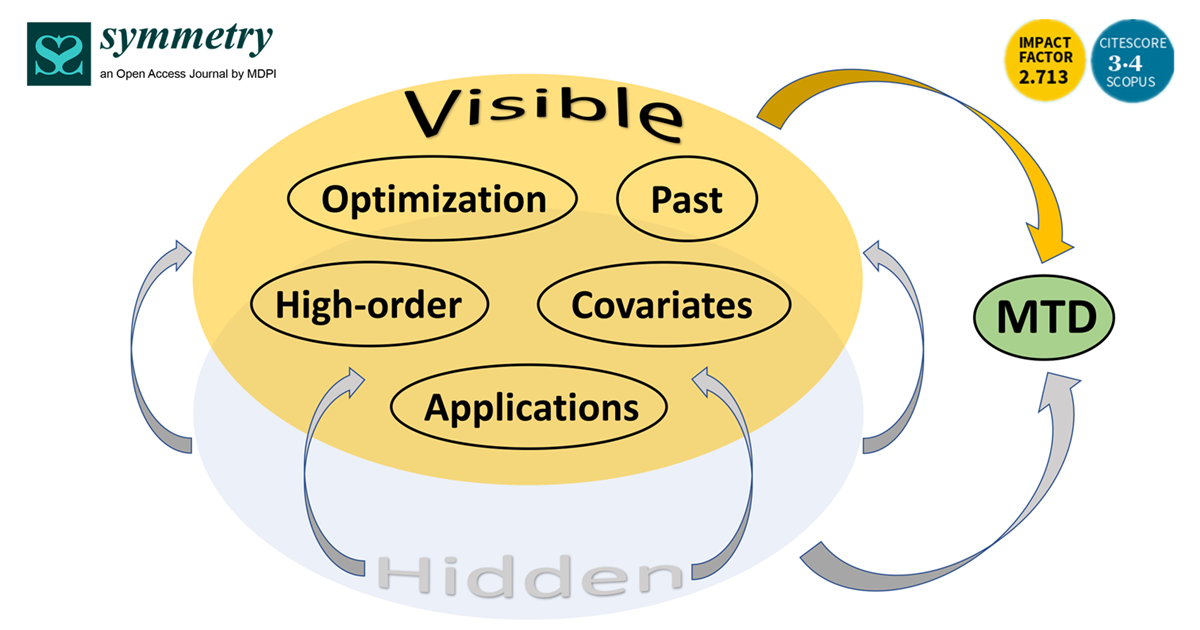- 2.2Impact Factor
- 5.3CiteScore
- 18 daysTime to First Decision
The Mixture Transition Distribution Model and Other Models for High-Order Dependencies
This special issue belongs to the section “Mathematics“.
Special Issue Information
Dear Colleagues,
High-order Markov chains are very useful for the analysis of complex temporal relationships, but they generally reqire a very high number of parameters. A good approach is then to approximate them, and since its introduction in 1985 by Adrian Raftery, the mixture transition distribution (MTD) model attracted much attention, thanks to its parsimony and versatility. The MTD model has been developed and improved in various ways. Now, it can be used to represent and analyze categorical and continuous variables, covariates can be added as additional explanatory terms to the model, and it can also be combined with a hidden or a double-chain Markov model in order to consider the latent phenomena. The MTD model can be estimated through the standard EM algorithm, but ad hoc optimization algorithms were also developed for special situations. Finally, many applied papers have been published in fields as diverse as health, neural networks, finance, marketing, life course, and weather, among others.
Given its base concept, the MTD model introduces a kind of symmetrical relationship between the past and the present—the form of the contribution of each past event to the present is similar, only the respective importance of each contribution is different.
Given the large interest existing around the MTD model principles, the main objectives of this Special Issue are to take stock of 35 years of use of the model, to introduce new directions for future developments, to compare it with alternative specifications of high-order models, and to think about new fields of application. Therefore, this Special Issue welcomes all papers related to the MTD model, demonstrating new theoretical developments, new applications, or both. Papers showing the combined use of the MTD model with other statistical tools are especially welcome, as well as use of the MTD model in mixed-method research.
Prof. Dr. André Berchtold
Guest Editor
Manuscript Submission Information
Manuscripts should be submitted online at www.mdpi.com by registering and logging in to this website. Once you are registered, click here to go to the submission form. Manuscripts can be submitted until the deadline. All submissions that pass pre-check are peer-reviewed. Accepted papers will be published continuously in the journal (as soon as accepted) and will be listed together on the special issue website. Research articles, review articles as well as short communications are invited. For planned papers, a title and short abstract (about 250 words) can be sent to the Editorial Office for assessment.
Submitted manuscripts should not have been published previously, nor be under consideration for publication elsewhere (except conference proceedings papers). All manuscripts are thoroughly refereed through a single-blind peer-review process. A guide for authors and other relevant information for submission of manuscripts is available on the Instructions for Authors page. Symmetry is an international peer-reviewed open access monthly journal published by MDPI.
Please visit the Instructions for Authors page before submitting a manuscript. The Article Processing Charge (APC) for publication in this open access journal is 2400 CHF (Swiss Francs). Submitted papers should be well formatted and use good English. Authors may use MDPI's English editing service prior to publication or during author revisions.
Keywords
- mixture transition distribution (MTD) model
- Markov chain
- high-order model
- hidden model
- optimization
- combination of models
- applications

Benefits of Publishing in a Special Issue
- Ease of navigation: Grouping papers by topic helps scholars navigate broad scope journals more efficiently.
- Greater discoverability: Special Issues support the reach and impact of scientific research. Articles in Special Issues are more discoverable and cited more frequently.
- Expansion of research network: Special Issues facilitate connections among authors, fostering scientific collaborations.
- External promotion: Articles in Special Issues are often promoted through the journal's social media, increasing their visibility.
- e-Book format: Special Issues with more than 10 articles can be published as dedicated e-books, ensuring wide and rapid dissemination.

